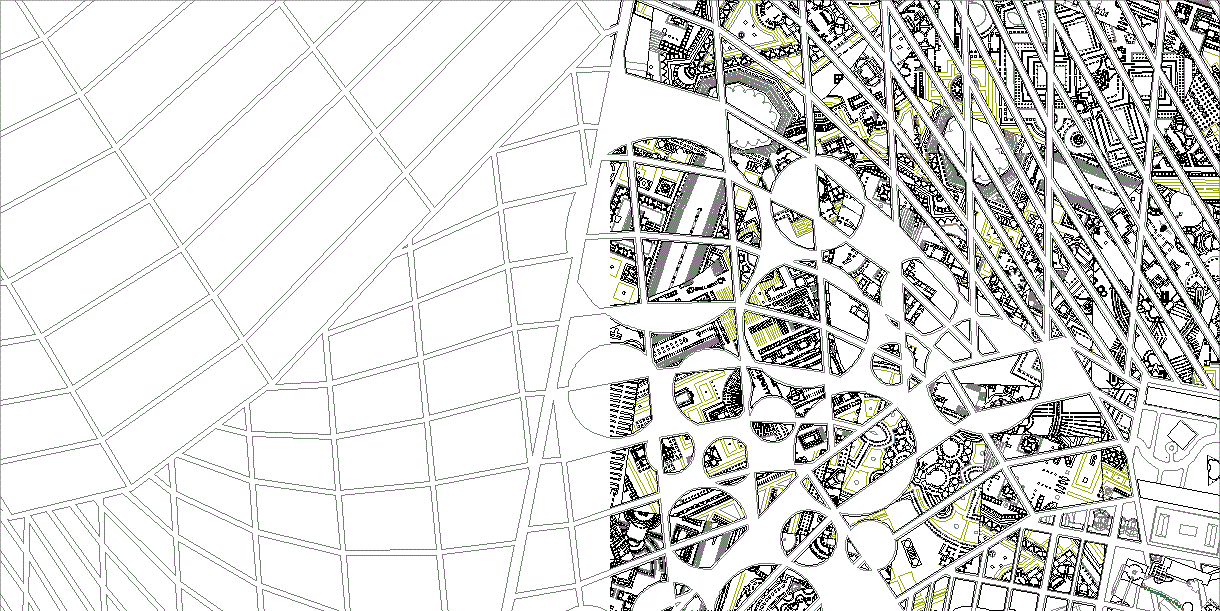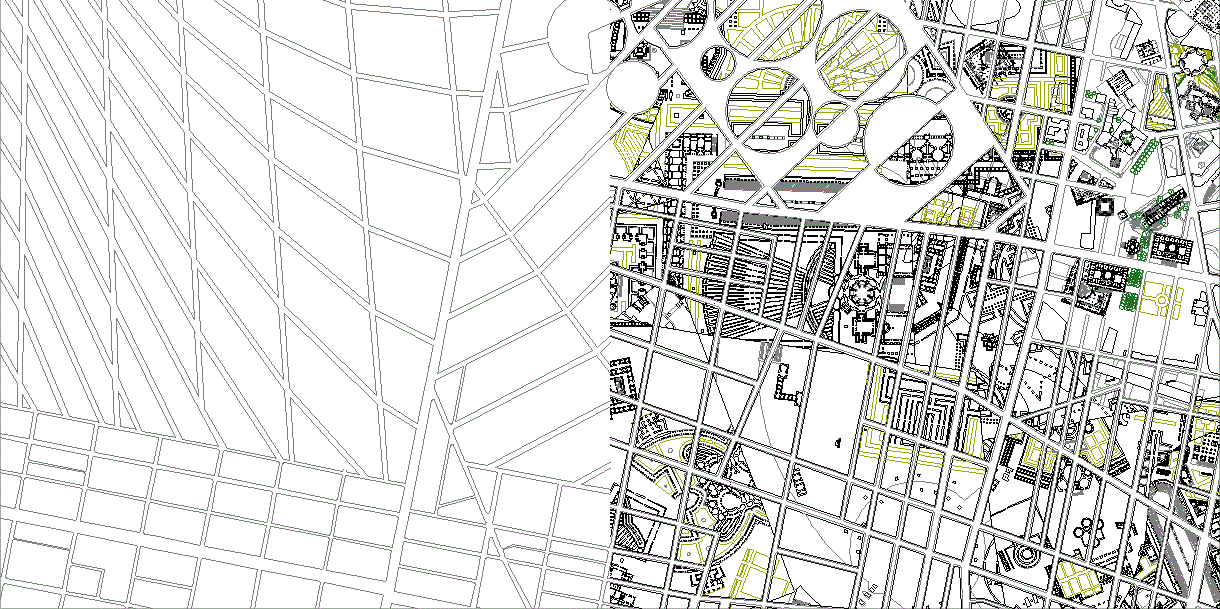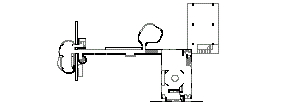 
NPApraksin District DTM Zone
| |
1982 The Architecture of the City
"After I wrote this book and from the concepts I postulated in it, I outlined the hypothesis of the analogous city, in which I attempted to deal with theoretical questions concerning design in architecture. In particular I elaborated a compositional procedure that is based on certain fundamental artifacts in the urban reality around which other artifacts are constituted within the framework of an analogous system. To illustrate this concept I gave the example of Canaletto's fantasy view of Venice, a capriccio in which Palladio's project for the Ponti di Rialto, the Basilica of Vicenza, and the Palazzo Chiericate are set next to each other and described as if the painter were rendering an urban scene he had actually observed. These three Palladian monuments, none of which are actually in Venice (one is a project; the other two are in Vicenza), nevertheless constitute an analogous Venice formed of specific elements associated with the history of both architecture and the city. The geographic transposition of the monuments within the painting constitutes a city that we recognize, even though it is a place of purely architectural reference. This example enables me to demonstrate how a logical-formal operation could be translated into a design method and then into a hypothesis for a theory of architectural design in which the elements were preestablished and formally defined, but where the significance that sprung forth at the end of the operation was the authentic, unforeseen, and original meaning of the work."
Aldo Rossi
1982 Mayor's House 2269
1983 Parc de La Villette
1984 Casa Collage 001 225a
1984 Casa Collage 002 225b
1984 Casa Collage 003 225c
1984 Casa Collage 004 225d
1984 Casa Collage 005 225d
1984.12.01
Neue Staatsgalerie
Finally, there is the theme of stylistic eclecticism. Here there is neither frivolity now regression. The simultaneous references to various vocabularies does not interfere with the unity of the composition. This is because each allusion applies only to isolated elements that do not intervene in the general concept of the work, and because these references become ironical because of the contradictions between vocabulary and technological executions.
It is difficult to find another building that conveys, with such perfection, a linguistic coherence and faithfulness to the syntax of the most radical avante garde of the Modern Movement, and this despite the use of various historical quotations. These quotations--Neo-Classical, Baroque, Corbusian, Constructivist or Loosian--have another important progrommatic value: they demonstrate how electicism can use recent traditions, and thus, how the Modern Movement can be included in the continuum of history.
--Oriol Bohigas
1993 Parthenon columns at Wall House 2 2283
1993 Parthenon columns at Villa Stein de Monzie 2284
1993 Analogous Building 2287
1995.07.24
The Timepiece of Humanity
The present moves in only one direction, a direction wherein the future becomes the past. As the present animates time, it simultaneously transforms an inert future into an inert past. In this sense, the past and the future are the same; one becomes the other, and they both share an inert existence. Time is, therefore, one huge continuum, consisting almost entirely of an inert past and an inert future. The past and future coexist in time, and it is only the present that brings time out of inertia.
1998 virtue2vicegrip machine4living 2299

1999 Ur-Ottopia House 2303
1999 Maison Millennium 001 2304
1999 Palace of Ottopia 2305
1999 Lauf Haus der Kunst 2306
1999 Schizophrenic Folds 2307
|